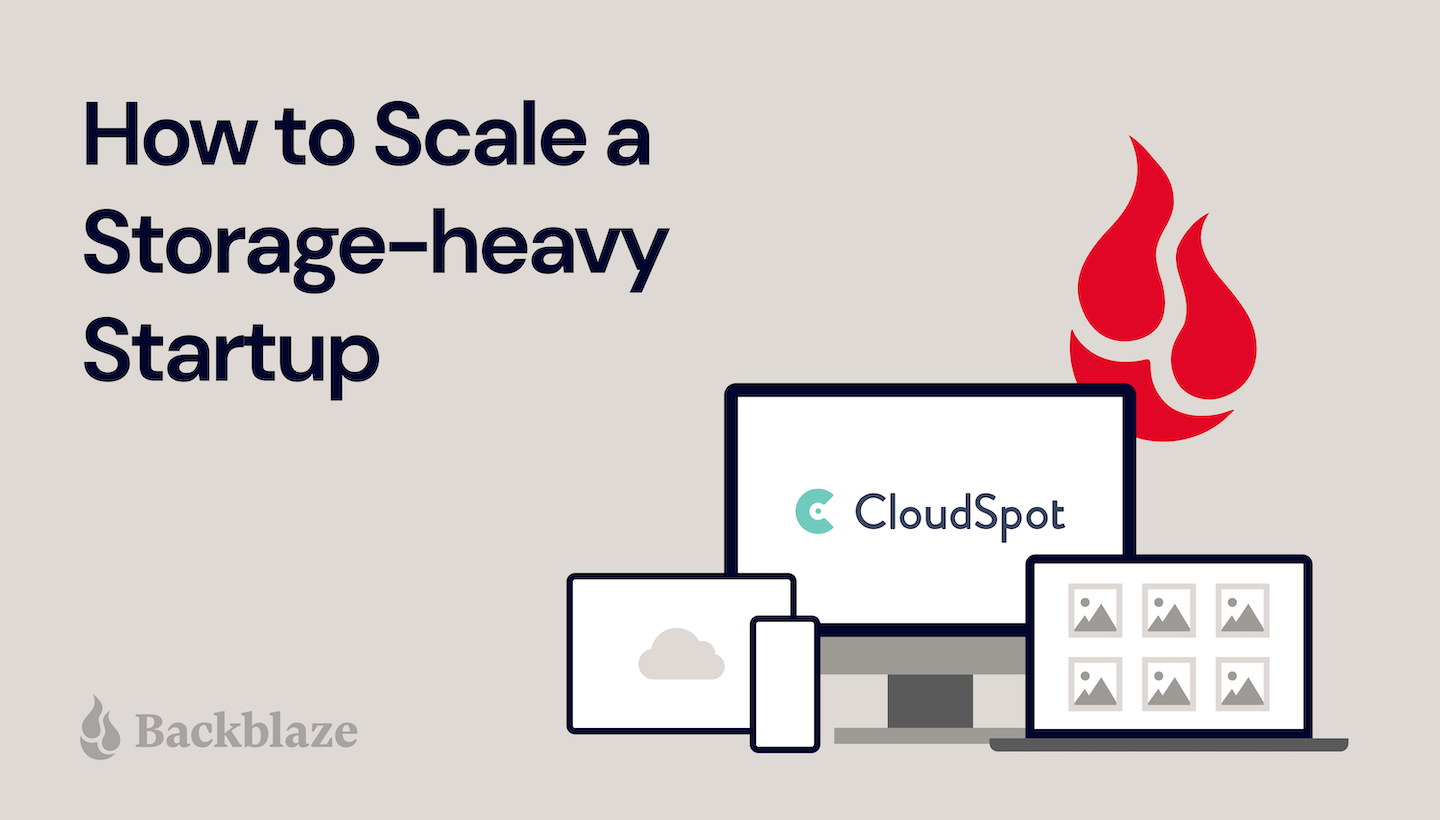
No developer likes to feel stuck with a cloud vendor, especially when you’re paying for the trap. Being locked in because the expense of moving is prohibitive or the risk of service disruption is too great can be singularly frustrating. Unfortunately, Gavin Wade, Founder and CEO of CloudSpot, found himself in exactly that position.
Gavin shared how he restructured his cloud architecture (containing more than 700TB of images under management), enabling him to:
- Cut storage costs in half.
- Slow the rate at which storage costs compound by half.
- Cut data transfer costs by 90%.
- Lower breakeven customer volume.
- Increase margins.
What Is CloudSpot?
CloudSpot is a software as a service (SaaS) business platform based in Irvine, CA that makes professional photographers’ lives easier. The CloudSpot app allows photographers to deliver images digitally to clients in beautiful galleries through a seamless system.

Amazon Web Services gave CloudSpot free credits for storage. When those credits ran out, CloudSpot would have happily left to avoid escalating storage costs but felt trapped by high egress fees.
“We had a few internal conversations where we concluded that we were stuck with Amazon. That’s never a good feeling in business.”
—Gavin Wade, Founder & CEO, CloudSpot
How CloudSpot Solved for Escalating Storage Costs
In the short term, CloudSpot’s development team, led by their vice president of engineering, took a few key steps to manage costs:
- They untangled their monolithic system into a cluster of microservices.
- They moved to a Kubernetes environment where images upload directly to storage, then CloudSpot’s microservices retroactively query the data they need.
The transition to microservices made their infrastructure more nimble, but Gavin still had to reluctantly cut key promotional offers like free migration for prospective customers in order to maintain margins.
When Cost-cutting Measures Still Don’t Suffice
Even after optimizing workflows, storage costs continued to snowball. Namely:
- The service grew—customers were uploading five times the previous year’s volume.
- Gavin wanted to position the company for triple-digit growth in the upcoming year.
They decided to move their production data to Backblaze B2 Cloud Storage. The potential ROI of switching to Backblaze B2 was too substantial to ignore for a data-heavy startup, and Backblaze’s Cloud to Cloud Migration service allowed them to move 700TB of data in one day with zero transfer fees.
Migrating Storage Clouds Without Service Disruption
CloudSpot’s data is accessed frequently, and the CloudSpot development team had to make sure customers saw no disruptions. To do so, they supported both environments—on Amazon S3 and Backblaze B2—simultaneously for one week to ensure everything was working. Then, they disabled uploads to Amazon S3 and redirected new uploads to Backblaze B2.
“It was like changing the tires on a car while it’s flying down the road at 100 mph,” but a change that resulted in no loss of operational efficiency, speed, or reliability.
—Gavin Wade, Founder & CEO, CloudSpot
Cloud to Cloud Migration Is Not Out of Reach
Like many developers, Gavin thought he was trapped in a walled garden with Amazon S3. Improving CloudSpot’s workflows unlocked the switch to Backblaze B2, enabling CloudSpot to:
- Structure workflows using best-of-breed providers.
- Reintroduce free migration.
- Grow margins.
- Demonstrate savvy decision-making to future investors.

“Software margins are expected to be high. If you can take a big cut of that, it allows you to scale more rapidly. It just makes our story so much better, especially as a SaaS business looking to scale, grow, and raise capital.”
—Gavin Wade, Founder & CEO, CloudSpot
Unlocking Capacity to Scale With Backblaze B2
Read more about how CloudSpot overcame vendor lock-in to realize exponential growth, and check out our Cloud to Cloud Migration offer and partners—we’ll pay for your data transfer if you need to move more than 10TB out of Amazon.













